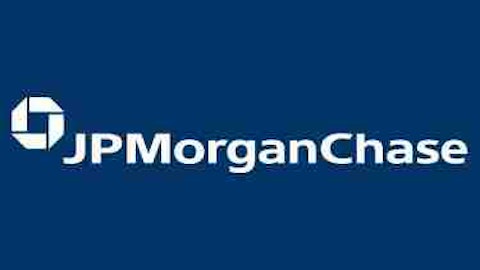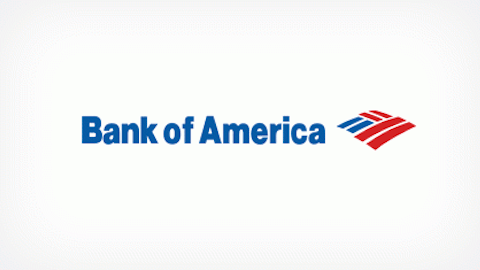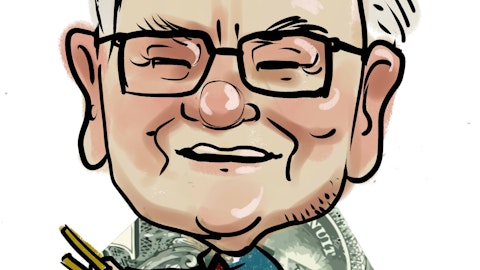Wells Fargo & Co (NYSE:WFC), the fourth largest bank in the U.S., has grown tremendously over the past few decades. In fact, over the past ten years alone, Wells Fargo’s total assets have nearly quadrupled, from about $388 billion to over $1.4 trillion. Additionally, Wells Fargo was one of the few major U.S. banks that actually came out of the financial crisis better than it went in, thanks to some very savvy moves that should produce better than average returns going forward. However, with shares up by more than 30% in the past year, is Wells Fargo still a buy?

A recent history of Wells Fargo
Wells Fargo & Co (NYSE:WFC) has been around since 1852, but did not begin its rapid growth until the 1980’s. Wells Fargo first entered the top ten U.S. banks in 1986 with the acquisition of Crocker National Bank. The company became number 9 with its acquisition of First Interstate Bancorp a decade later, and then became the 7th largest when it was acquired by Norwest Corporation which kept the Wells Fargo name.
In one of the best deals to come out of the crisis, Wells Fargo & Co (NYSE:WFC) acquired Wachovia in 2008, which had been weakened by nonperforming mortgage loans. The purchase price of $23.1 billion was a fraction of Wachovia’s value just a few years earlier, and the deal added $707 billion to Wells Fargo’s balance sheet. Most importantly, it allowed Wells Fargo to significantly expand its geographic footprint and customer base, and it catapulted the company to the 4th largest U.S. bank, where it has remained ever since.
Numbers and projections
With some of the strongest fundamentals in the banking industry, the market has a generally high opinion of Wells Fargo. While mortgage banking revenues have slowed down a bit, the rise in interest rates that has occurred lately should help the bank’s net interest margin, and this trend will likely continue if rates rise going forward.
Wells Fargo & Co (NYSE:WFC) is expected to earn $3.71 for the 2013 fiscal year, which means that shares trade at just 10.9 times current year earnings. The consensus calls for the company’s earnings to rise to $3.90 and $4.13 over the following two years, for a three-year annual average forward earnings growth rate of 7%. Bear in mind that this could prove to be very conservative if interest rates begin to rise faster than currently expected. Also worth noting is that Wells Fargo & Co (NYSE:WFC) has successfully raised its dividend faster than virtually any other big bank after the crisis, and currently pays 2.9% annually, just shy of its payout before the crisis hit.
Bank of America: for those with a stronger stomach
Bank of America Corp (NYSE:BAC) was hit harder by the crisis, but that means that there is the potential for a stronger comeback for those investors willing to ride out the roller coaster ride in the meantime. With about $2.2 trillion in assets, Bank of America is the 2nd largest U.S. bank, but they have not quite recovered their pre-crisis stability just yet. Bank of America Corp (NYSE:BAC) just returned to profitability last year, after posting operating losses from 2008 through early 2011, and ended 2012 with a modest profit of $0.25 per share. In contrast, Wells Fargo & Co (NYSE:WFC) never had a losing year, and last year’s earnings of $3.37 per share are actually higher than the company’s best year before the crisis.
However, where there is instability, there is more potential to make money when things start going right. The analysts covering the company seem to agree, and expect earnings to come back with a vengeance going forward. Bank of America Corp (NYSE:BAC) is expected to earn $0.93 per share this year, rising to $1.29 and $1.51 in 2014 and 2015, respectively.
Goldman Sachs: a different approach
An alternative way to play the banking sector is through investment banking, and my personal favorite in the space is Goldman Sachs Group, Inc. (NYSE:GS). Goldman Sachs not only made it through the financial crisis, but did well. In fact, 2009 was the company’s second most profitable year in their history! Warren Buffett called Goldman Sachs “a bet on brains” when he invested in the company about five years ago, and they seem to be able to make money no matter what the market is doing. Goldman Sachs Group, Inc. (NYSE:GS) trades at just 11.4 times this year’s earnings, which are projected to grow at 11% going forward.
Conclusion
Despite the recent gains in the sector, bank stocks still appear to be very cheap. While this industry is extremely dependent on the sustainability of the economic recovery in the U.S., which is far from certain, there could be big profits in the future for those who are willing to take the chance at this stage in the game.
Matthew Frankel has no position in any stocks mentioned. The Motley Fool recommends Bank of America Corp (NYSE:BAC), Goldman Sachs, and Wells Fargo & Co (NYSE:WFC). The Motley Fool owns shares of Bank of America and Wells Fargo.
The article Bank Stocks Are Still Cheap After This Year’s Gains originally appeared on Fool.com and is written by Matthew Frankel.
Copyright © 1995 – 2013 The Motley Fool, LLC. All rights reserved. The Motley Fool has a disclosure policy.






